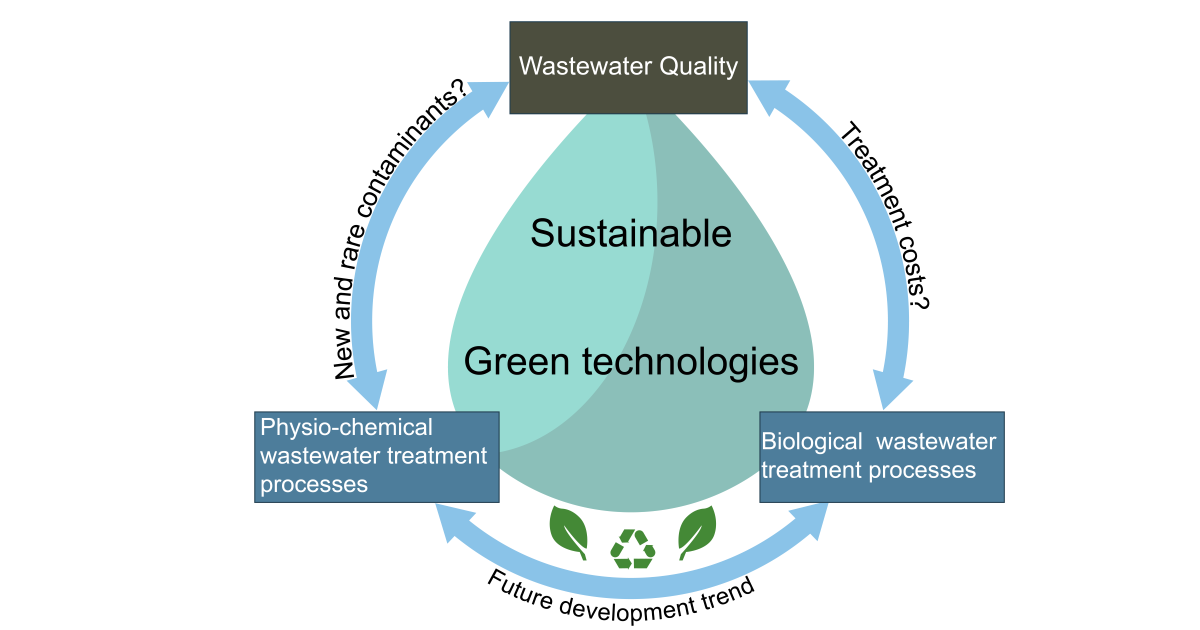Biological and Chemical Wastewater Treatment Processes
A special issue of Processes (ISSN 2227-9717). This special issue belongs to the section "Environmental and Green Processes".
Deadline for manuscript submissions: closed (25 January 2023) | Viewed by 14522

Special Issue Editor
Interests: wastewater treatment and recycling; sustainable technologies; green technologies; coagulation
Special Issues, Collections and Topics in MDPI journals
Special Issue Information
Dear Colleagues,
Wastewater generation is inevitable. Therefore, it is essential to treat it in an efficient and effective way so as to minimize its effects on the environment. The development and implementation of wastewater treatment technologies have led to the emergence of many processes used for wastewater ultra-purification. This has been largely driven by: treatment costs, the discovery of new and rare contaminants and the adoption of new and stringent water quality standards. Most of these new technologies have high efficiency in removing contaminants from wastewater. However, biological and physio-chemical processes stand out in terms of cost-efficiency, ease of maintenance and operation.
This Special Issue focusing on “Biological and Physio-chemical wastewater Treatment Processes” invites original, novel and rigorously researched quality work and results that have generic significance. The overall and main focus is on the publication of original and impactful research on the recent developments of sustainable and green technologies focusing on wastewater treatment.
Topics on wastewater treatment covered include, but are not limited to:
- Physio-chemical processes (Coagulation and Flocculation, Ion exchange, Adsorption/ Biosorption);
- Biological processes (Membrane bioreactors, Aerobic processes, Anaerobic processes, Biofilm processes);
- Residual management and resource recovery;
- Contaminants (microbial, chemical and anthropogenic particles), related water quality monitoring, sensing, fate, and assessment.
Dr. Qunshan Wei
Guest Editor
Manuscript Submission Information
Manuscripts should be submitted online at www.mdpi.com by registering and logging in to this website. Once you are registered, click here to go to the submission form. Manuscripts can be submitted until the deadline. All submissions that pass pre-check are peer-reviewed. Accepted papers will be published continuously in the journal (as soon as accepted) and will be listed together on the special issue website. Research articles, review articles as well as short communications are invited. For planned papers, a title and short abstract (about 100 words) can be sent to the Editorial Office for announcement on this website.
Submitted manuscripts should not have been published previously, nor be under consideration for publication elsewhere (except conference proceedings papers). All manuscripts are thoroughly refereed through a single-blind peer-review process. A guide for authors and other relevant information for submission of manuscripts is available on the Instructions for Authors page. Processes is an international peer-reviewed open access monthly journal published by MDPI.
Please visit the Instructions for Authors page before submitting a manuscript. The Article Processing Charge (APC) for publication in this open access journal is 2400 CHF (Swiss Francs). Submitted papers should be well formatted and use good English. Authors may use MDPI's English editing service prior to publication or during author revisions.
Keywords
- biological processes
- physio-chemical processes
- sustainable technologies
- green technologies
Benefits of Publishing in a Special Issue
- Ease of navigation: Grouping papers by topic helps scholars navigate broad scope journals more efficiently.
- Greater discoverability: Special Issues support the reach and impact of scientific research. Articles in Special Issues are more discoverable and cited more frequently.
- Expansion of research network: Special Issues facilitate connections among authors, fostering scientific collaborations.
- External promotion: Articles in Special Issues are often promoted through the journal's social media, increasing their visibility.
- e-Book format: Special Issues with more than 10 articles can be published as dedicated e-books, ensuring wide and rapid dissemination.
Further information on MDPI's Special Issue policies can be found here.





